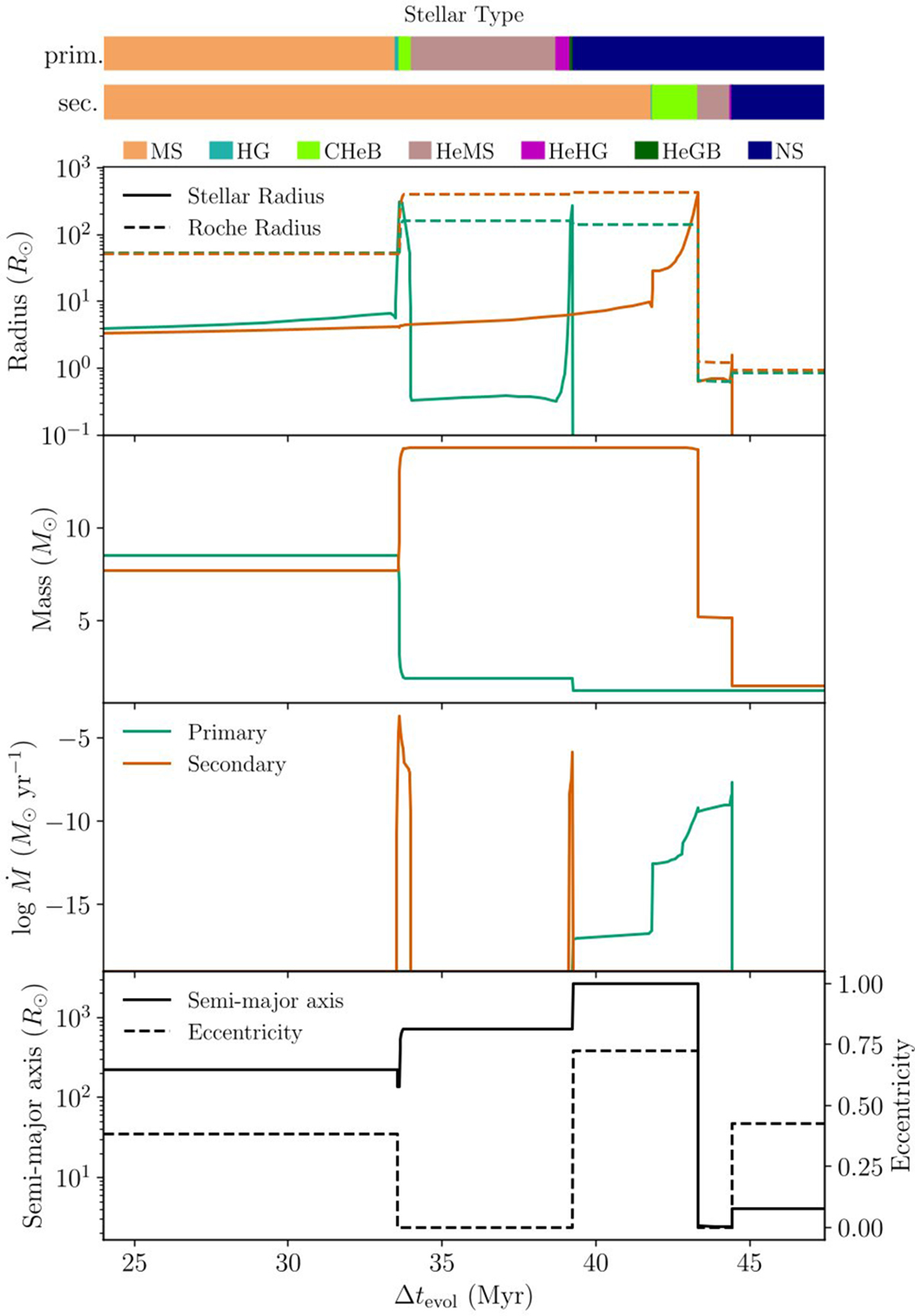Fig. 2.

Download original image
Evolution of a binary system of the standard evolutionary track forming a BNS at Z = 0.00044. The first 24 Myr of main sequence evolution are hidden. The top colour bars show the evolution of stellar types of the primary (top) and the secondary (bottom) during the binary evolution. Then, from top to bottom, we show the evolution of (1) the stellar radii (solid lines) and Roche radii (dashed lines) and (2) the masses of the two stars; (3) the mass growth rates and (4) the semi-major axis (solid line) and the eccentricity (dashed line) of the system. Quantities are shown in green for the primary and in orange for the secondary. When either of the stellar radii exceeds the Roche radius (panel (1)), a simultaneous accretion event occurs on the companion, in opposite colours (panel (3)). Accretion is also possible onto compact objects from stellar winds from the companion. We note that in panel (3), we show the stellar mass growth rate, which accounts for both mass accretion and mass loss simultaneously. When Ṁ is not visible, this means that the star loses mass overall. When Ṁ > 0 and R < RL, we observed accretion of material onto a compact object (NS or WD) from the stellar winds of the companion.
Current usage metrics show cumulative count of Article Views (full-text article views including HTML views, PDF and ePub downloads, according to the available data) and Abstracts Views on Vision4Press platform.
Data correspond to usage on the plateform after 2015. The current usage metrics is available 48-96 hours after online publication and is updated daily on week days.
Initial download of the metrics may take a while.


